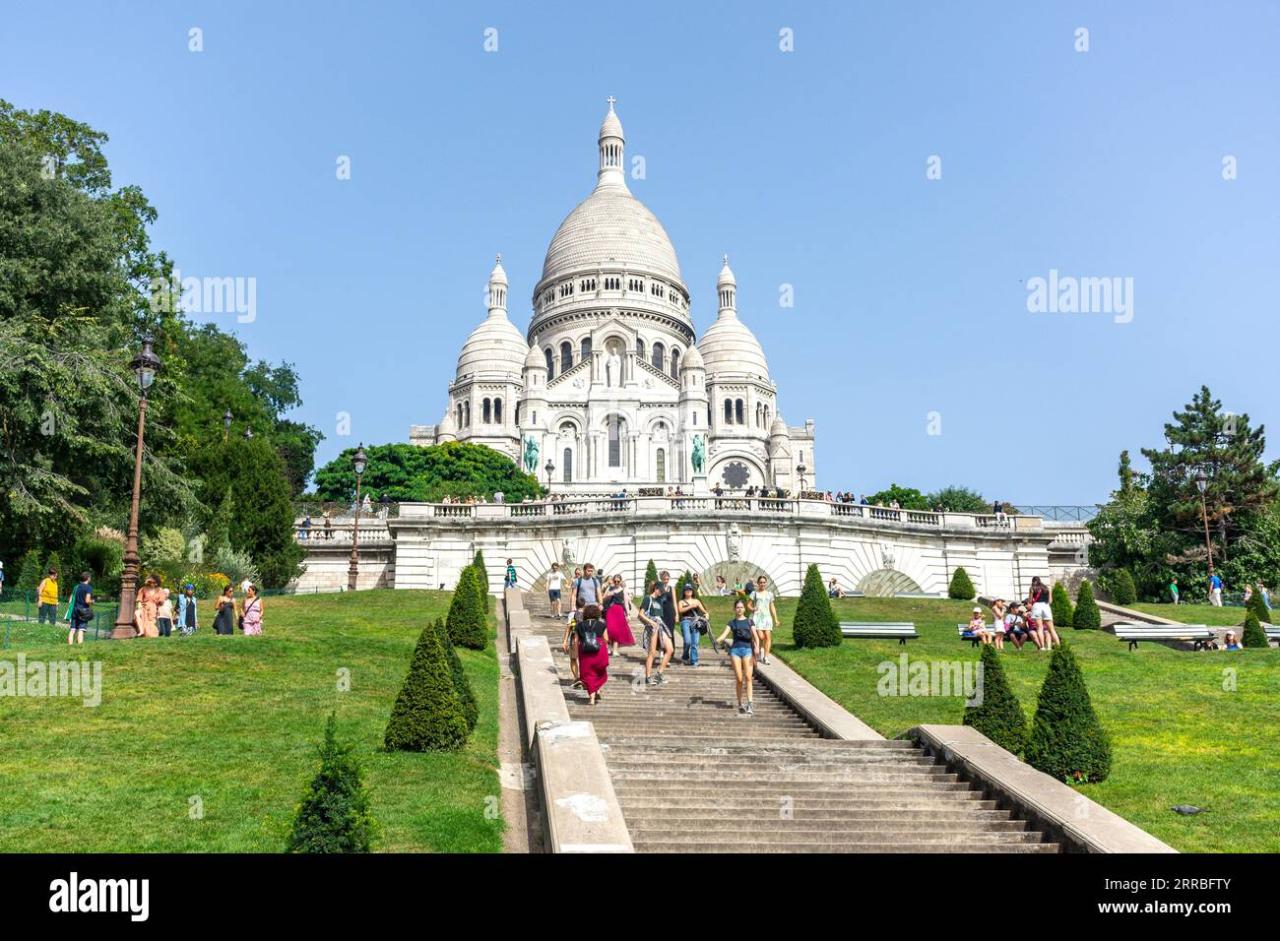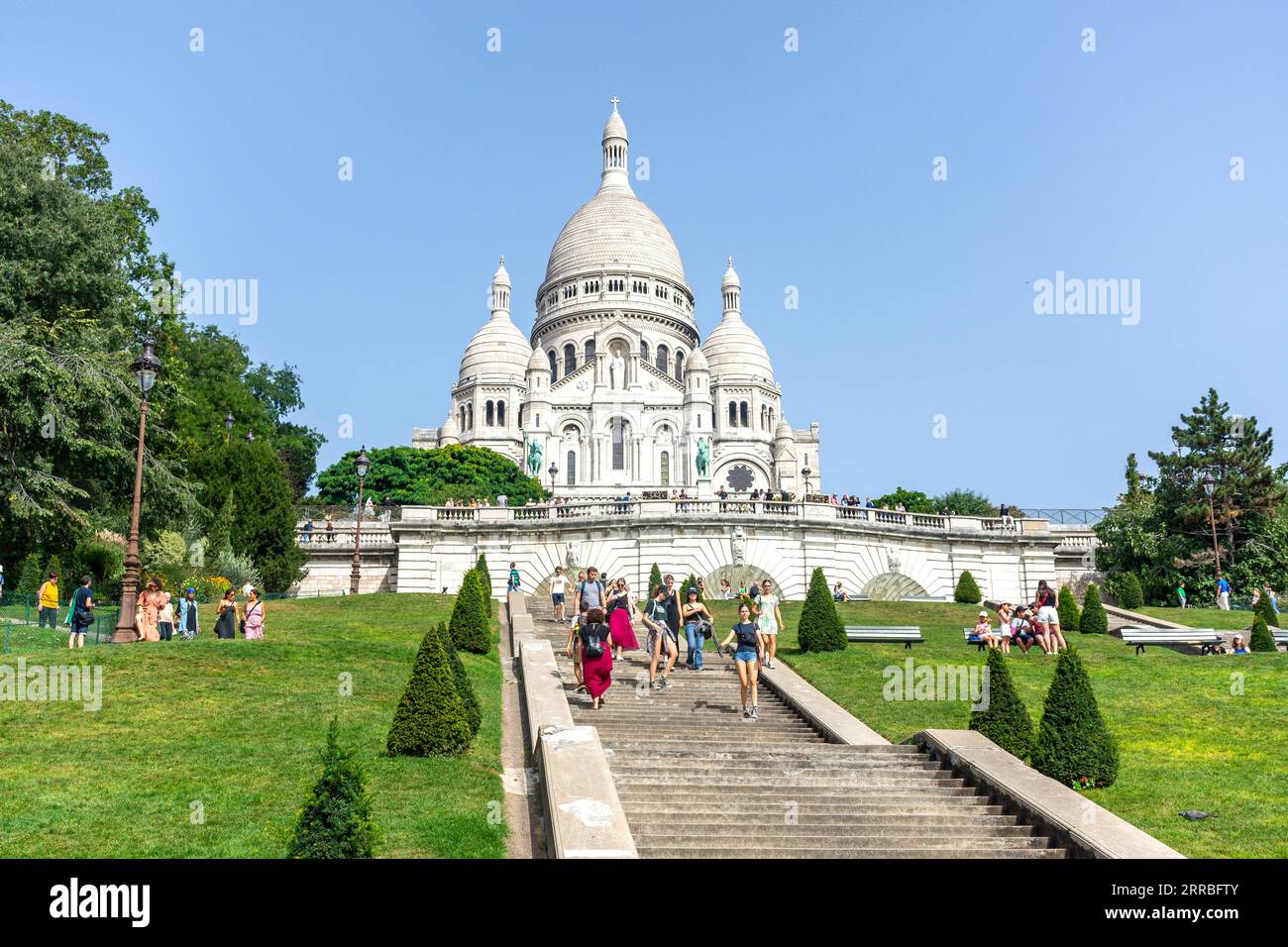The Basilica of Sacré-Cœur: A Monument of Faith, Penance, and National Identity on Montmartre
The Basilica of Sacré-Cœur, perched atop the butte of Montmartre, is one of Paris’s most recognizable and iconic landmarks. More than just a stunning architectural achievement, the Sacré-Cœur is a powerful symbol steeped in religious, political, and social significance. Its construction, design, and ongoing function represent a complex tapestry of French history, faith, and national identity. Understanding its multifaceted meaning is crucial to appreciating its enduring presence on the Parisian skyline.
A Vow and a Nation in Crisis: The Origins of the Basilica
The genesis of the Sacré-Cœur lies in the tumultuous aftermath of the Franco-Prussian War (1870-1871). France suffered a humiliating defeat, and Paris endured a siege followed by the bloody suppression of the Paris Commune. This period of national crisis and social upheaval deeply scarred the nation.
Alexandre Legentil and Hubert Rohault de Fleury, two prominent Catholics, attributed France’s misfortunes to moral decay and a perceived abandonment of religious values. They made a vow to construct a church dedicated to the Sacred Heart of Jesus if France were spared from complete destruction. They saw the Sacred Heart, a symbol of Christ’s divine love and compassion, as a source of hope and redemption for a wounded nation.
This vow resonated with many Catholics, who believed that a return to faith and repentance for the sins of the nation was essential for its recovery. The movement gained momentum, attracting support from influential figures in the Church and French society. In 1873, the National Assembly officially approved the construction of the Basilica of Sacré-Cœur as a "vow of national expiation."
Architecture as Allegory: The Design and Symbolism of the Basilica
The architectural design of the Sacré-Cœur is far from arbitrary; it is imbued with symbolic meaning, reflecting the purpose of the basilica as a monument of penance, faith, and national reconciliation. The architect, Paul Abadie, won a competition with his Romanesque-Byzantine design, a style that stood in stark contrast to the prevailing Gothic and Neoclassical styles of Paris.
-
Romanesque-Byzantine Style: The choice of this style was deliberate. It evoked a sense of the early Church and the grandeur of Byzantine art, suggesting a return to foundational Christian principles. The rounded arches, domes, and use of mosaics contributed to an atmosphere of spiritual solemnity and transcendence. This style also distanced the basilica from the architectural styles associated with the monarchy and the French Revolution, symbolizing a break from the past and a new beginning rooted in faith.
-
The White Stone: The Basilica is constructed from Château-Landon stone, a unique travertine that hardens and whitens with age and exposure to rain. This self-cleaning quality ensures that the Sacré-Cœur maintains its dazzling white appearance, symbolizing purity, hope, and the enduring power of faith. The gleaming white dome, visible from across Paris, serves as a constant reminder of the basilica’s presence and its message of spiritual renewal.
-
The Dome: The central dome, one of the highest points in Paris, dominates the basilica’s silhouette. Climbing to the top of the dome offers panoramic views of the city, but it also symbolizes ascending towards heaven and a closer connection with the divine. The dome’s interior is adorned with a vast mosaic of Christ Pantocrator, a representation of Christ as the ruler of the universe, reinforcing the basilica’s message of Christ’s universal love and authority.
-
The Mosaics: The Basilica is renowned for its extensive use of mosaics, which cover vast surfaces of the interior. These intricate mosaics depict scenes from the Bible, the lives of saints, and allegorical representations of virtues and vices. The mosaics serve as visual narratives, instructing and inspiring visitors with stories of faith, sacrifice, and redemption.
-
The Crypt: Beneath the main church lies a vast crypt, larger than the basilica itself. The crypt houses chapels dedicated to various saints and martyrs, providing a space for private prayer and reflection. The crypt’s design emphasizes humility and penance, reminding visitors of the need for repentance and spiritual purification.
A Site of Controversy and Pilgrimage: The Basilica’s Reception and Ongoing Significance
The construction of the Sacré-Cœur was not without controversy. Its association with the conservative Catholic movement and its origins as a "vow of national expiation" made it a target of criticism from secularists and those who viewed it as a symbol of political reaction. Some saw it as a monument to the suppression of the Paris Commune, a reminder of the violence and division that plagued France.
Despite the controversies, the Sacré-Cœur became a major pilgrimage site, attracting millions of visitors each year. Pilgrims came to pray for the healing of the nation, to seek forgiveness for their sins, and to find solace in the beauty and spiritual atmosphere of the basilica. The continuous adoration of the Blessed Sacrament, a practice that has been maintained since 1885, underscores the basilica’s primary function as a place of prayer and devotion.
Over time, the Sacré-Cœur has evolved beyond its initial context as a monument of national expiation. While its religious significance remains paramount, it has also become a symbol of Paris itself, an integral part of the city’s cultural heritage. Its image is ubiquitous, appearing on postcards, souvenirs, and in countless photographs.
The Sacré-Cœur Today: A Legacy of Faith, Art, and National Identity
Today, the Basilica of Sacré-Cœur continues to serve as a place of worship, pilgrimage, and artistic appreciation. It remains an active church, offering daily Mass and other religious services. The basilica’s artistic treasures, including its mosaics, sculptures, and stained-glass windows, attract art lovers from around the world.
Moreover, the Sacré-Cœur’s location on Montmartre, a historically bohemian district known for its artistic community, adds another layer to its significance. The basilica stands as a beacon of spirituality amidst the vibrant and often secular atmosphere of Montmartre, creating a unique juxtaposition of faith and artistic expression.
In conclusion, the Basilica of Sacré-Cœur is far more than just a beautiful building. It is a powerful symbol of faith, penance, and national identity, shaped by the historical context of its creation and the ongoing devotion of those who visit it. Its architectural design, imbued with symbolic meaning, reinforces its message of spiritual renewal and reconciliation. While its origins were rooted in controversy, the Sacré-Cœur has evolved into a beloved landmark, an integral part of the Parisian skyline and a testament to the enduring power of faith, art, and the human spirit. Its enduring presence on Montmartre serves as a constant reminder of France’s complex history and its ongoing search for meaning and unity.


